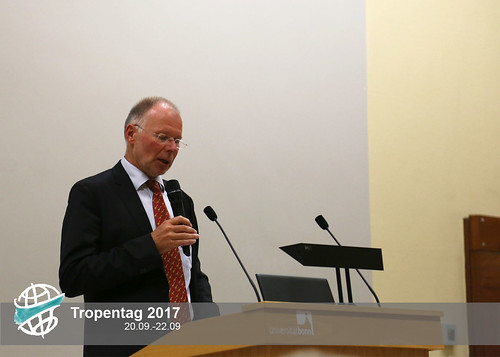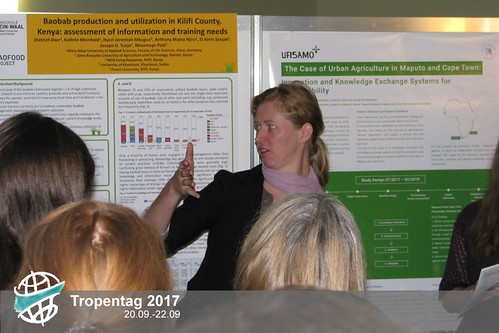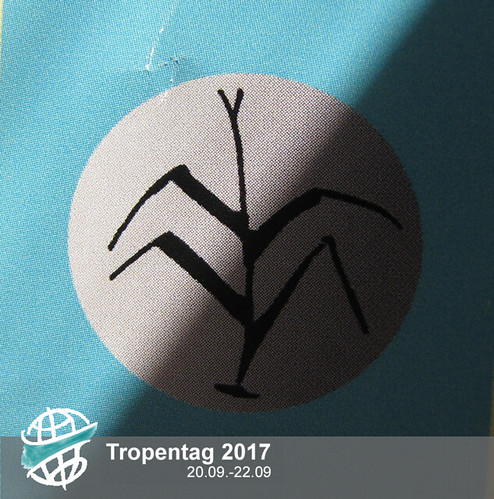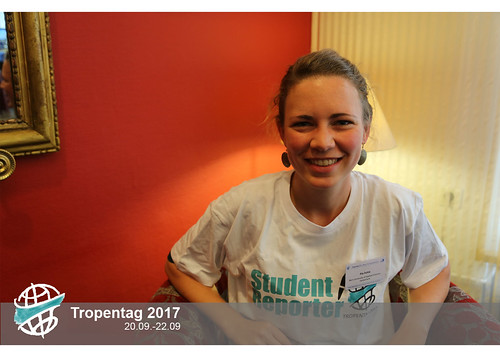marlemke's blog

“Smallscale Organic Agriculture is a Niche”
Mon, 10/02/2017 - 16:17 — marlemke“Small-scale organic agriculture is a niche” said Hans-Joachim Preuß, the managing director of GIZ, the largest development aid agency in Germany. Apparently, the future of development is large-scale industrial agriculture and big investment, according to the agenda of GIZ. “Smallscale organic agriculture won’t save the world”, said Hans Braun, director of the CGIAR Research Program on Wheat at CIMMYT, a research and training institution focused on wheat and maize. I wondered, what happened to sustainable agriculture?

The excitement and expectations of the participants of Tropentag about this year’s theme “Future Agriculture: Social-ecological transitions and bio-cultural shifts” didn't flag and were mostly met throughout the week, at least until the last two keynote speakers. Braun suggested further intensification of grain cultivation, as well as greater collaboration with the GIZ. Braun’s statements were reinforced by Preuß, who said organic products were to “only" address a “niche market”.

Give Farmers their Agency Back!
Mon, 09/25/2017 - 00:12 — marlemkeThe answer is: centralized breeding. Unfortunately, farmers are left out of the selection, development, and maintenance of crop traits. Even if they are the producers of our local food, and should be the protagonist.
The poster session on “Knowledge Systems” focused on educational and operative strategies with the ultimate goal of bringing food sovereignty to indigenous communities. Participatory breeding is an example of one that could strengthen local communities and provide independence from big seed and fertilizer companies.
Wouldn't that be great? This would not only give small farmers more freedom, but would also banish GMOs from their plates. Two birds with one stone.


Agroforestry Won't Save the World, but our Planet
Thu, 09/21/2017 - 19:06 — marlemkeAccording to the numerous audience's questions, agroforestry is in demand.
Of course! In terms of water and nutrient efficiency, trees are optimum, and hence are key for solving problems like nitrogen leaching and drought mitigation. Moreover, they can provide an additional income source for (smallholder) farmers in terms of fruit, medicine and timber. Their ecological value cannot only be reduced to shade provision and hydraulic lift for water and plant nutrients, they also function as a shelter belt for annual crops nearby. Trees also drastically reduce wind speed, minimizing transpiration. Niels Thevs from ICRAF reinforced these points in his oral presentation.
As far as resource efficiency is concerned, trees can substantially contribute to mitigate climate change and secure the existence of smallholders.


Better in the Ground than in the Freezer
Thu, 09/21/2017 - 14:13 — marlemkeWhile Global Crop Diversity Trust, as pointed out by Elena Popova in her oral presentation, accumulates more than 757, 000 seeds in their “Nordic gene bank” (NordGen) in Norway, a US$ 9 million project, smallholder farmers from all over the world simply cultivate grow theirs in the form of landraces to sustain themselves.
I believe we have to critically evaluate this development. On one hand, it’s good to have this reservoir of different crop plants and more than 80.000 seeds are distributed to farmers in 157 countries in the global South from the seed banks. On the other hand, resistance traits related to climate change such as drought tolerance and water logging don’t develop over night – and still less in a seed bank, possibly decades being stored there.
We need more biodiversity, but in the fields, not in the refrigerator.

Tropentag Poster Session Diary
Thu, 09/21/2017 - 13:14 — marlemkeAs such, we want to know how nature behaves. We want to mimic it, and often we want to be in control of it. We sometimes fight it, and sometimes cooperate with it.
We experiment with biological agents such as fungal isolates to fight root-knot nematodes on pineapple plantations in Kenya to avoid unnecessary pesticide use. Or we compare a conventional single-culture cacao cropping system with a agroforestry system, a natural, resilient system that copes with rapid changing abiotic factors due to climate change. Of course, we don't want to deal with the origins of the problem, which are usually man-made. What about reducing waste? Rethinking nutrition? Learning to make do with less? Ultimately, we all strive for the same: living our dreams.

Food for Thought: The Welcome Addresses
Wed, 09/20/2017 - 16:21 — marlemkeIt’s the 19th international conference since 1999, and over 1,000 registered participants from over 68 countries assembled to discuss our vision of a new path for agriculture, while still providing for the growing world population.
The inaugural speaker, Professor Mathias Becker from University of Bonn, emphasized the crucial role of young scientists and journalists, giving special thanks to us student reporters, who” link the world outside with the Tropentag conference”.
In accordance with the representative of the German Minister of Economic cooperation and Development, both acknowledged the massive deprivation of natural resources from intensive agriculture, e. g. deforestation, big monocultures and pesticide use. They also both mentioned that feeding the soaring demand for food, even while arable land was limited, would require intensification.
Can intensification be the only answer and solution? No, nor can CRISPR/Cas9 be, said Michael Hoch, Rector of the University of Bonn. He had further questions, what role does modern biotechnology play? How can small-scale farmers in South Asia and Sub-Saharan Africa be considered as a key factor to considerably change agricultural output? In contrast to keynote speaker Monty Jones, the minister of agriculture of Sierra Leone, the welcome speakers were less certain about how to feed the world in the future.

Pia, super swiss
Wed, 09/20/2017 - 10:24 — marlemkeHello Pia, please introduce yourself to us. I am Pia from Switzerland, I am about to finish my Masters in Applied Agricultural Sciences at the Bern University of Applied Sciences with a focus on value chains and rural development. My core topics are rural livelihoods and innovation in agriculture as well as participatory approaches.
What are your tasks for the upcoming three days? I am part of the video team and therefore responsible for the production of video material, I will collect the voices and opinions of the participants.
What are your expectations for Tropentag 2017? Lots of lively discussions about the future of agriculture, both in the sessions as well as online. Obviously thanks to our incredible online coverage. Also, an enhanced mutual understanding of people from different backgrounds. Productive, useful conclusions and outputs by the participants.
How did you come here? I attended last year’s Tropentag, where I presented a poster, and was so inspired that I wanted to come back to see the conference from a different perspective. I am especially interested because I am in (science) communications and media.






